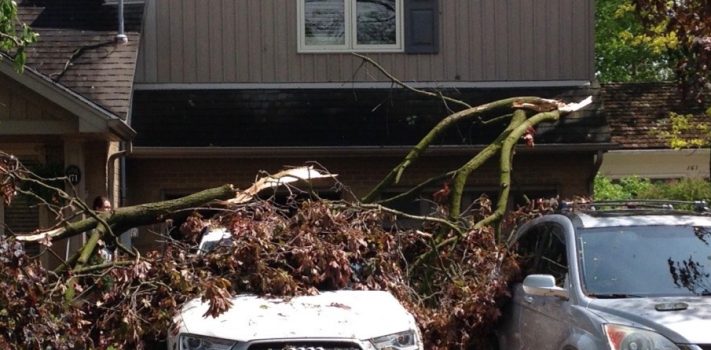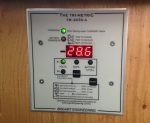(Continued from Part 1.)
Charging Overview
At a high level, the stages of charging a battery include: bulk, absorption, and float. On batteries that have been discharged deeply, there is also an equalization charge required.
Bulk charging demands high current. Absorption charging requires less current but a slightly elevated voltage. Float is your trickle charge which has low current at about one volt above the stasis voltage of a charged battery.
As covered in a recent SurvivalBlog article, the charge levels of flooded batteries can be determined accurately using a hydrometer. Each cell should have an equal level of charge. If the levels differ, it is time to equalize them. The equalization charge requires a voltage about 10% higher than what is standardly used for absorption. Equalization time will vary slightly, but generally it is one to two hours. With experience, you will learn whether equalization needs to be performed monthly, or more frequently. In the case of infrequent discharge cycles, it might even be sufficient to equalize annually.
Flooded lead-acid batteries emit hydrogen gas while being charged. Manufacturers recommend that enclosed spaces containing such batteries be adequately vented to the outside and that you don’t cause sparks nearby.
I have experienced explosions while charging a neglected battery – don’t be careless. If you are also a compulsive experimenter at heart, you might be interested in the observation that I keep my heavily used wood-fired cookstove in the same 14-foot by 16-foot room as my flooded deep cycle batteries. However, I do not equalize batteries when there is a fire going. My batteries are in a well-vented box designed to help contain possible mishaps.
If you have safety concerns about gassing, you ought to read carefully about sealed lead acid batteries which are becoming increasingly common. The absorbed glass mat (AGM), has similar charge characteristics as the flooded lead-acid battery, which means that most chargers designed for flooded batteries will work adequately with AGMs. The more sophisticated chargers further have the ability to tweak the charge regime slightly to accommodate the subtle differences. Differences may be subtle, but accommodating them could extend the useful life of your storage devices.
A key advantage of the AGM is that as a sealed unit it can be placed on its side without compromising its effectiveness. AGMs also can be used without consideration to venting. They are typically sold as 12-volt storage devices and while they do tolerate moderately deep cycles, they are also reasonable at providing the instantaneous high current required by vehicle starting requirements. Many high-end modern cars are now using AGMs in place of the flooded variety. AGMs are significantly more expensive than a standard flooded deep-cycle battery.
There are other lead-based batteries around, like the gel cell – but mostly these have been replaced with the slightly more robust AGM. Be aware that gel cells can be destroyed by high-voltage charging. Follow the battery manufacturer’s instructions to be sure.
There are also those batteries sold as “Marine/RV deep cycle” batteries. These are not truly deep cycle and are not truly starting batteries – but might work adequately as either.
Some still might argue that the lithium chemistry batteries are more efficient, but is this like saying that the Lincoln is a better car than the one you are currently driving?
Most manufacturers rate the AGM and the deep cycle flooded batteries at better than 90% efficiency. If you take care of the batteries, they will continue to operate at better than 70% efficiency for more than a decade. If you abuse them, of course, they might last much less.
A Battery’s Useful Life
The most common abuses of a lead acid battery involve neglect.
All batteries self-discharge over time. If you allow the battery to sit for weeks never topping up the charge, the lead acid battery will sulphate and shorten its useful life. With vehicular batteries we rely on trickle chargers, on battery maintainers, for vehicles which see patterns of seasonal use. Some of these trickle chargers are small solar panels that sit on the dash. While these were once the rage, their solar panels were often too tiny and inadequate to be of much practical use.
A second abuse is allowing the electrolyte levels in flooded lead acid batteries to go below the level of the plates. Periodic maintenance of electrolyte levels is essential. If you can’t discipline yourself to this routine, then you might consider spending extra money on AGMs.
A third abuse is allowing the discharge cycle to go too deep. Unlike the computer controlled systems required for lithium, lead acid technology leaves it up to you to avoid excessive discharges. A shunt-based battery monitor is the most convenient way to keep track of battery state of charge and to guard against excessive discharge. Without a monitor, you will rely on regular hydrometer readings, intuition and battery voltage to estimate the state of charge.
A fourth abuse is not providing sufficient charge voltage for full absorption. These specifications tend to vary slightly based on battery manufacturer – the better charge controllers will allow for tweaks to optimize these parameters.
A fifth abuse is not adjusting the charge voltage based on the temperature of the battery. Batteries store energy using chemical reactions. Chemical reactions speed up as temperatures rise. Batteries in a freezing environment require higher charge voltages than those in the summer heat. Not reducing the charge voltage in summer when it is 95F can shorten the life of the battery. Most modern charge controllers have the ability to attach a temperature sensor to the battery and automatically make the appropriate adjustment.
A sixth abuse is never equalizing a heavily used flooded battery.
Figure 2: A shunt-based battery monitor will track charge history, equalization, and battery condition.
Do note, however, that some AGM manufacturers might recommend a different equalization voltage, or might not recommend equalization.
Keeping the batteries charged every week will tend to lengthen their useful life. That is where a solar photovoltaic (PV) array really shines (if you’ll pardon the pun). If your batteries are a part of a PV system it will automatically ensure that the batteries have a full charge whenever there is a sunny day. Even on a cloudy day, the batteries will receive a trickle charge at the very least.
One additional caveat. Don’t overestimate solar energy production. Photovoltaic panels never produce the power they are marketed as. When panels get hot, their efficiency falls. In the months surrounding the winter solstice, the shortened days and the snow cover will serve to inhibit production. Other than that, you have to consider the fact that peak energy production only occurs when the sun hits the panels at 90 degrees. For most of us it is impractical to optimize this angle. A sophisticated, expensive tracking system is out of the question for most backup power systems.
I know of installations in the north that change the angle seasonally, twice a year, based on solar incidence angles in May & July, and the winter. At the first hint of snowfall, they are set to be completely vertical because the deep winter sun barely creeps over the horizon and snow accumulation can be a major problem. These are also modern Asian panels that benefit slightly from backscatter of the snow. Such costly arrays of 32 large panels can generate 100 kilowatt-hours (KWH) on a long and bright summer day, but might produce just 4 KWH on a cloudy winter day.
Sizing of Batteries
Traditionally batteries have been rated based on amp-hours (AH). The typical lead acid rating for AH is based on a test that determines the amps required over 20 hours to discharge a battery to the point where the voltage produced at stasis is only 10.5 VDC. So, a 100 AH battery is estimated to be good for about 5 amps per hour of load over a 20 hour period. In practice, you never want to discharge a battery to this extent. The good news is that most appliances will not require continuous amps for 20 hours – most will cycle on and off on intervals of minutes.
If you intend to run an inverter, you will need a lot more than 100 AH of storage. I used 235 AH as a starting point which I estimate will buy me enough time to get the generator going on days in which there is not much sunlight on a multi-day power outage. I do test cycle my generators every two years to be sure that the fuel does not get old and that the mice have not built their nests in the intakes – as they have proven to do.
More recently, some battery packs are being marketed with not AH ratings, but watt-hour ratings. It is clear that AH ratings cannot simply be translated into watt-hours – these are different tests altogether.
Battery Charging
The unloaded PV panels might produce a peak open circuit voltage (Pov) of 36 volts in direct sunlight. This is too much for direct connection to batteries. A charge controller between your PV array and your batteries will adjust the voltage and the amperage flowing to the batteries. Charge controllers are typically classified as PWM (pulse width modulated), or maximum powerpoint tracking (MPPT). I have only ever used the MPPT variety controllers.
The MPPT circuitry will convert the incoming power from your PV to optimize either voltage, or amperage, depending on the stage of the charge cycle. A discharged battery requires bulk charging, that is it requires more amps at a reduced voltage. Bulk charging of a 12-volt system is typically performed in the range of 13.1 – 13.6 volts, with maximum current based on the generation abilities of your PV and the requirements based on the depth of discharge of your batteries.
Once the bulk of the charge is completed, the remainder of the charge requires less amps but a slightly higher voltage to top up during the absorption stage. Absorption typically requires 14.4 volts or more. Once the absorption is complete, the charge controller reverts to a trickle charge which is typically 13.6 – 13.8 vdc, but can vary slightly by battery manufacture – this is also referred to as the float voltage.
New 12 volt lead acid batteries when taken off the charger will typically read 13.0 volts several hours later. Overnight, if there is little load, or if the batteries are beginning to show their age, you will typically read 12.6 – 12.8 volts. If you are connected to a PV system, you rarely disconnect the batteries from the charge controller in practice.
If you are running DC appliances these can be fused directly off the batteries at this point. For this, you might want to use an automotive/marine-style fuse panel such as those offered by Blue Sea. Always fuse the main feed between the batteries and the inverter using a fuse size calculated based on maximum current draw of your inverter – this fuse should be placed as near the batteries themselves as possible.
(To be concluded tomorrow, in Part 3.)











